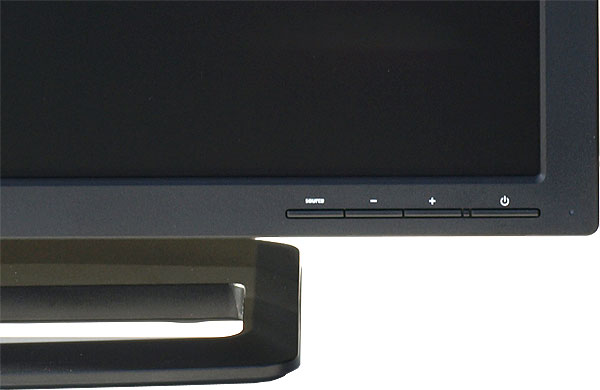HP ZR30w 30-Inch S-IPS LCD Monitor Review
Calibration & Controls

There's a good reason why we're not going over the ZR30w's OSD (On Screen Display) controls, and that's because there simply aren't any. Say what? It seems odd that a modern day monitor would ship without OSD controls, but in reality, HP's isn't the only 30-inch panel to omit this feature. The lack of an OSD isn't such a bad thing for the average user who's likely to end up making the monitor look worse anyway, but for graphics professionals with a keen eye, this is definitely something to consider. Why did HP do it? That's a good question, so we presented it straight to HP.
As HP explains it, the benefits of omitting OSD controls are four-fold, including lower power (versus models with front end processors), less components and thus less chance of a failure, lower latency from the graphics card to the LCD, and lower costs for the consumer.

"What allows HP to achieve these four points (and in turn, forgo the OSD) is a technology called Direct Drive. Direct Drive connects the ZR30w to the workstation graphics card directly without an intervening front end processor, which is what ordinarily displays the OSD menu. The ZR30w does not have a front end processor. Many heavily-used options of the OSD (color, brightness, contrast, etc.) are accessible through the graphics card's own control panel, anyway."
HP also explained that the ZR30w uses the scalar engine in the graphics cards to push pixels on the panel's native 2560x1600 resolution, and because all graphics card come with a scalar engine, HP feels this to be a more efficient use of resources. And finally, HP pointed out that they aren't the only ones to take this approach - Dell's 3007WFP and Apple's Cinema 24-inch and 30-inch displays all use a Direct Drive architecture as well.

The bottom right portion of the panel houses four physical buttons rather than the backlit touch controls found on so many monitors today, another throwback to the pre-glossy era. There's the power button on the far right, a Source button on the far left for switching between DVI and DisplayPort inputs, and + and - buttons sandwiched in between. The + and - buttons adjust the screen's brightness, and without an OSD to guide you along, you're shooting in the dark, so to speak. To keep you from guessing when you reach the minimum or maximum brightness levels, the blue LED in the bottom right corner will flash three times when you've reached either limit.
In addition to brightness, pressing both the + and - buttons at the same time toggles the ZR30w's Dynamic Contrast Ratio (DCR) mode, which is disabled by default. As we explained earlier, a dynamic contrast ratio measures the absolute brightest and darkest levels a monitor is capable of producing, just never at the same time. With DCR enabled, the ZR30w will, for example, dim or turn off the backlight to produce a darker black in scenes that require it. If you ever get confused which mode you're in, hold both buttons and take note of the flashing LED - four flashes means you just enabled DCR mode, and a single flash means you've turned it back off.
|
Without any OSD controls to play with, you're left to your own devices to calibrate the ZR30w. Your options run the gamut from pricey software packages, like Spyder 3 Studio SR, to Windows 7's built-in calibration tools, as shown above. Running the built-in tools won't cost you a dime, but you are given the following warning:

If you choose to proceed anyway, you'll gain access a set of four basic tools for adjusting the display's gamma, brightness, contrast, and color balance. For giggles, we fired up the menus to see if anything needed tweaking, and as it turns out, there wasn't.










